Abstract
A method is described for obtaining synchronously growing swarmer cell populations of Hyphomicrobium sp. strain B-522. This was accomplished by isolating young swarmers from random cultures by centrifugation and filtration. Cell multiplication occurred during 38% of the growth cycle in populations synchronized in this manner. Observations were made of the changes in cellular morphology which occurred during the growth cycle. Of the 14.25 h required for the doubling in cell numbers, an average of 5 h passed before the swarmer cells began to develop their hyphae. This time varied over a range of 10 h. The time interval between the beginning of hyphal development and the beginning of bud formation was 3.5 to 4.5 h. The maturation of the first buds and their separation from the mother cells were completed in 5.5 h. The duration of these steps is compared to those measured previously in agar slide cultures.
Full text
PDF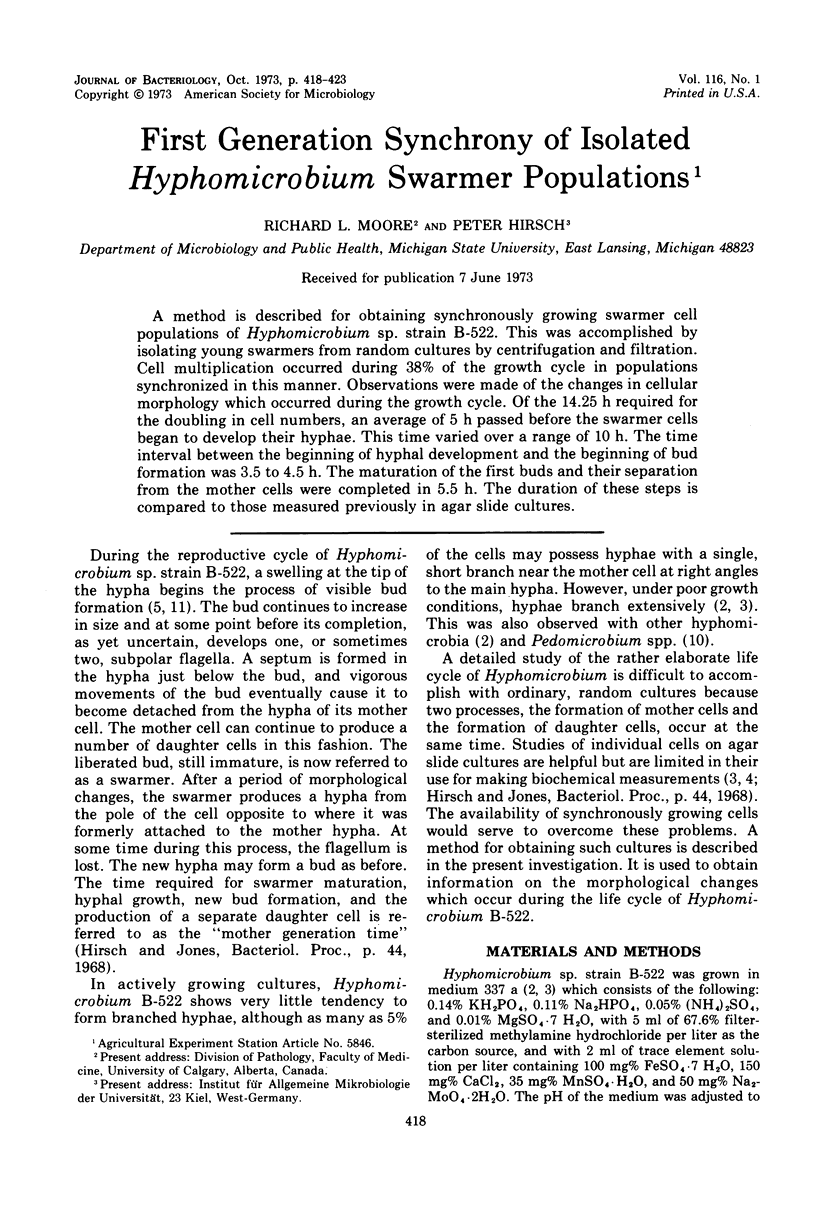
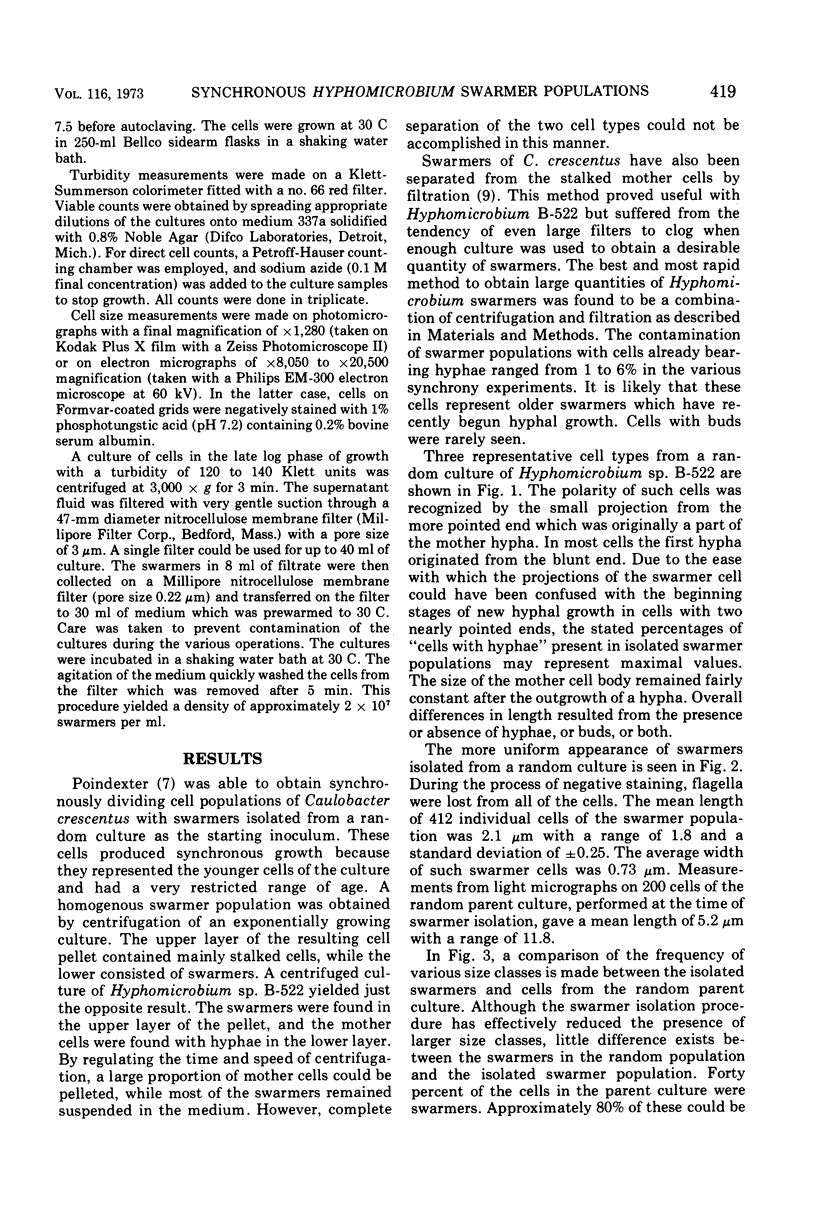
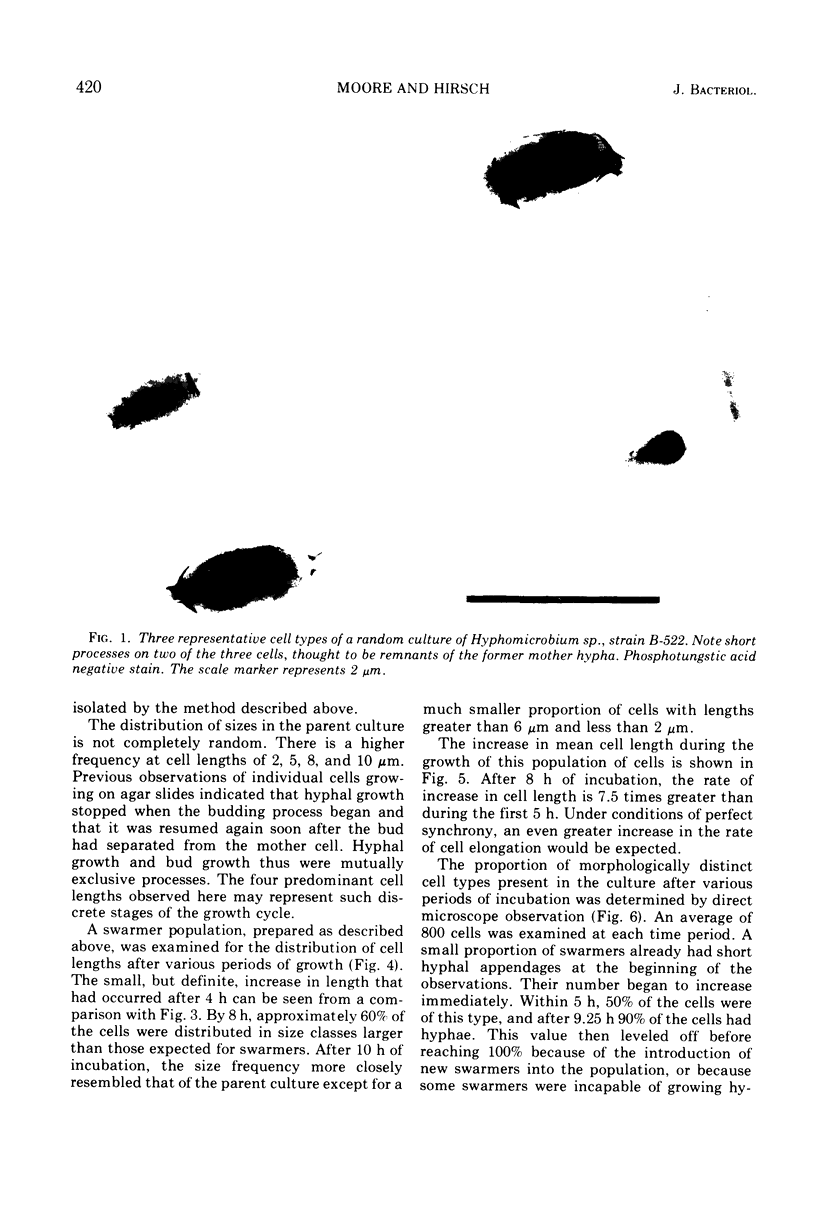
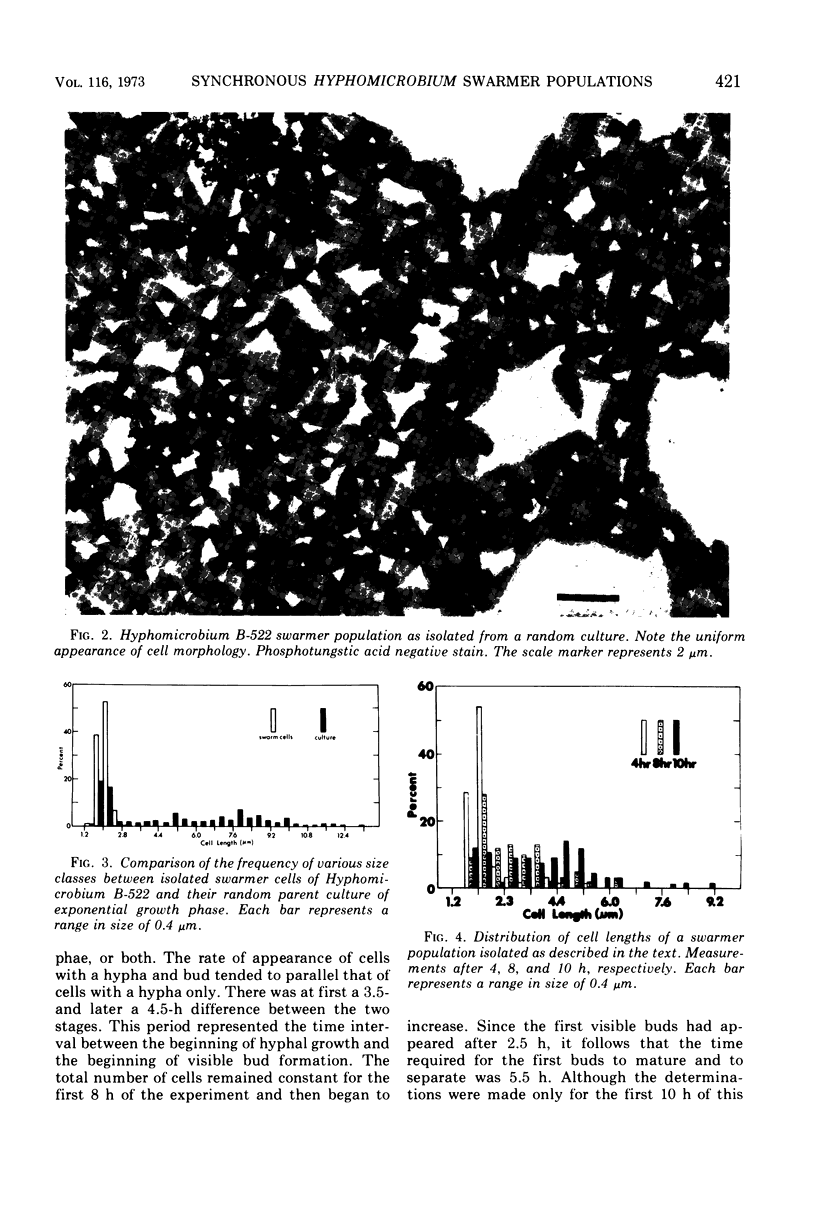
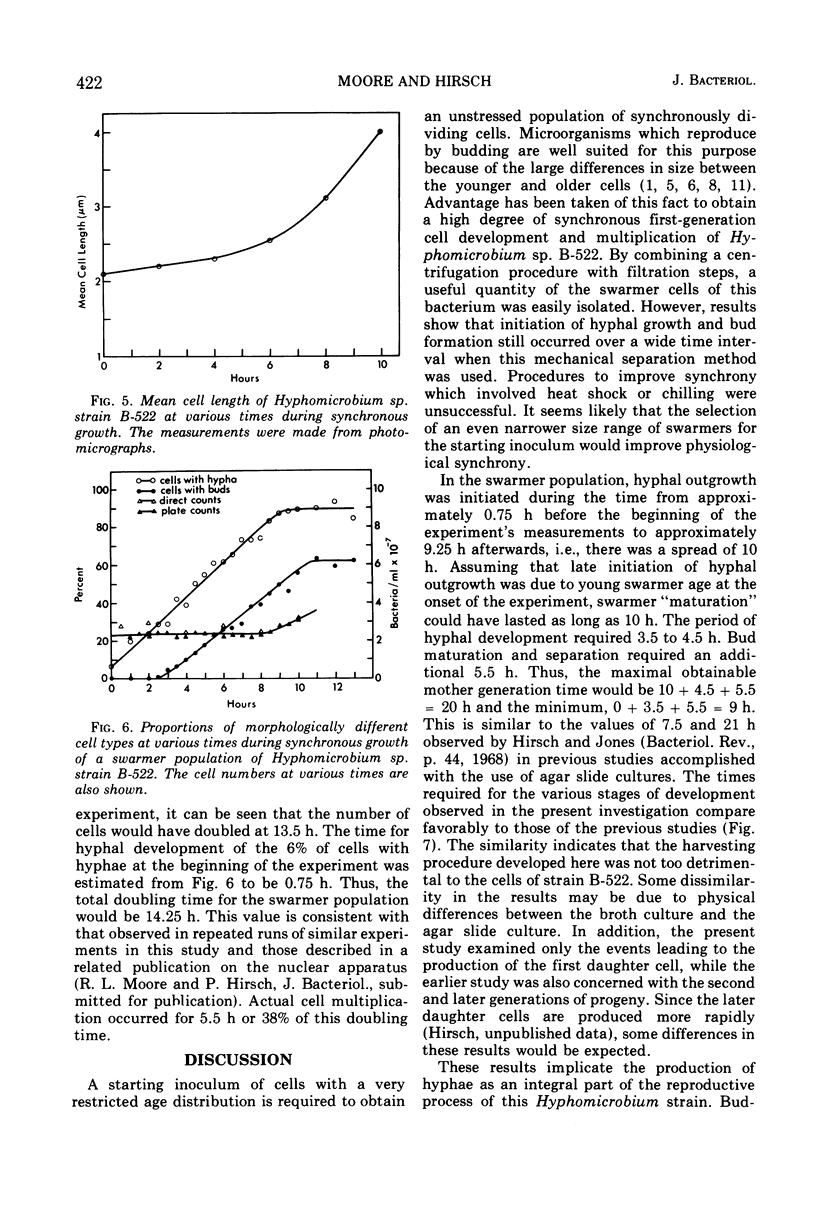
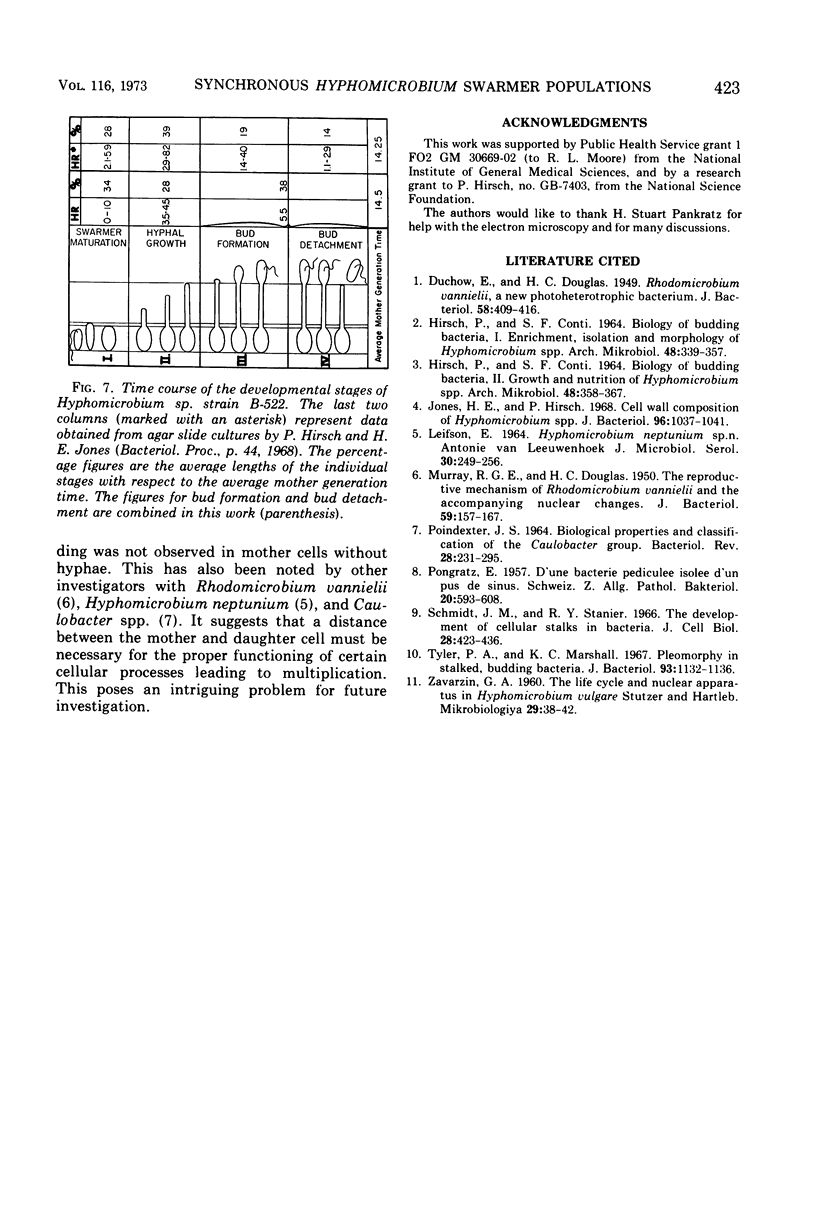
Images in this article
Selected References
These references are in PubMed. This may not be the complete list of references from this article.
- Duchow E., Douglas H. C. RHODOMICROBIUM VANNIELII, A NEW PHOTOHETEROTROPHIC BACTERIUM. J Bacteriol. 1949 Oct;58(4):409–416. doi: 10.1128/jb.58.4.409-416.1949. [DOI] [PMC free article] [PubMed] [Google Scholar]
- HIRSCH P., CONTI S. F. BIOLOGY OF BUDDING BACTERIA. I. ENRICHMENT, ISOLATION AND MORPHOLOGY OF HYPHOMICROBIUM SPP. Arch Mikrobiol. 1964 Jun 26;48:339–357. doi: 10.1007/BF00405978. [DOI] [PubMed] [Google Scholar]
- HIRSCH P., CONTI S. F. BIOLOGY OF BUDDING BACTERIA. II. GROWTH AND NUTRITION OF HYPHOMICROBIUM SPP. Arch Mikrobiol. 1964 Jun 26;48:358–367. doi: 10.1007/BF00405979. [DOI] [PubMed] [Google Scholar]
- Jones H. E., Hirsch P. Cell wall composition of Hypomicrobium species. J Bacteriol. 1968 Oct;96(4):1037–1041. doi: 10.1128/jb.96.4.1037-1041.1968. [DOI] [PMC free article] [PubMed] [Google Scholar]
- LEIFSON E. HYPHOMICROBIUM NEPTUNIUM SP. N. Antonie Van Leeuwenhoek. 1964;30:249–256. doi: 10.1007/BF02046730. [DOI] [PubMed] [Google Scholar]
- MURRAY R. G. E., DOUGLAS H. C. The reproductive mechanism of Rhodomicrobium vannielii and the accompanying nuclear changes. J Bacteriol. 1950 Feb;59(2):157–167. doi: 10.1128/jb.59.2.157-167.1950. [DOI] [PMC free article] [PubMed] [Google Scholar]
- POINDEXTER J. S. BIOLOGICAL PROPERTIES AND CLASSIFICATION OF THE CAULOBACTER GROUP. Bacteriol Rev. 1964 Sep;28:231–295. doi: 10.1128/br.28.3.231-295.1964. [DOI] [PMC free article] [PubMed] [Google Scholar]
- PONGRATZ E. D'une bactérie pédiculée isolée d'un pus de sinus. Schweiz Z Pathol Bakteriol. 1957;20(5):593–608. [PubMed] [Google Scholar]
- Schmidt J. M., Stanier R. Y. The development of cellular stalks in bacteria. J Cell Biol. 1966 Mar;28(3):423–436. doi: 10.1083/jcb.28.3.423. [DOI] [PMC free article] [PubMed] [Google Scholar]
- Tyler P. A., Marshall K. C. Pleomorphy in stalked, budding bacteria. J Bacteriol. 1967 Mar;93(3):1132–1136. doi: 10.1128/jb.93.3.1132-1136.1967. [DOI] [PMC free article] [PubMed] [Google Scholar]
- ZAVARZIN G. A. [The developmental cycle and the nuclear apparatus of Hyphomicrobium vulgare Stutz. et Hartleb]. Mikrobiologiia. 1960 Jan-Feb;29:38–42. [PubMed] [Google Scholar]




